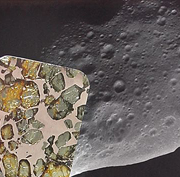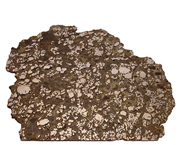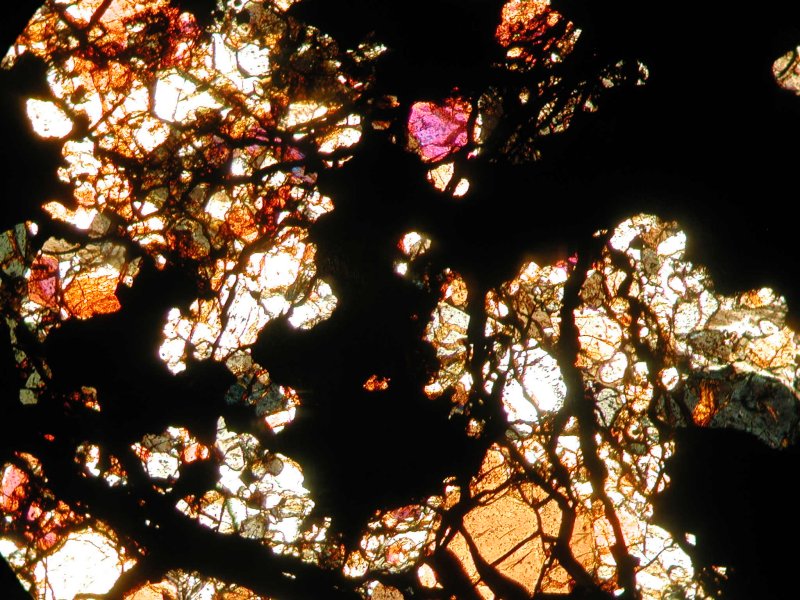Half Iron, Half Stone

Enlargement
The Esquel pallasite contains rounded fragments of silicates. They come from the mantle of a differentiated asteroid. |
Stony-iron meteorites are made up of a mixture of almost equal parts iron-nickel alloy and silicates. Stony-iron meteorites are very rare-a little more than one hundred have been recovered in the world to date. Two classes of stony-irons-the pallasites and the mesosiderites-are represented by a fair number of specimens. Other classes exist, but they include only rare or even one-of-a-kind specimens.

Enlargement
Cut of the Estherville mesosiderite. The brownish zones are made up of irregularly shaped fragments of silicates. |
Pallasites are probably the most beautiful meteorites. These meteorites come from differentiated parent bodies. Between the metals that are concentrated at the centre of the parent body and the silicates that make up its crust, there is an amalgam of the two materials. This amalgam is made up of green or yellow olivine crystals enmeshed in an iron-nickel alloy showing Widmanstätten figures. The grains of olivine trapped in the metallic matrix are rounded.
Mesosiderites are different in many ways. The mixture of metals and silicates in mesosiderites is much finer than that found in pallasites. Their mineral components are not round, but angular, which suggests that an impact preceded their formation. These meteorites may have formed following a violent collision between two asteroids: one rich in iron and nickel, the other rich in silicates.
 |
| Enlargement |
| The Crab Orchard mesosiderite seen through a microscope. Polarized light passes through the silicates while the metallic areas remain dark. |
|